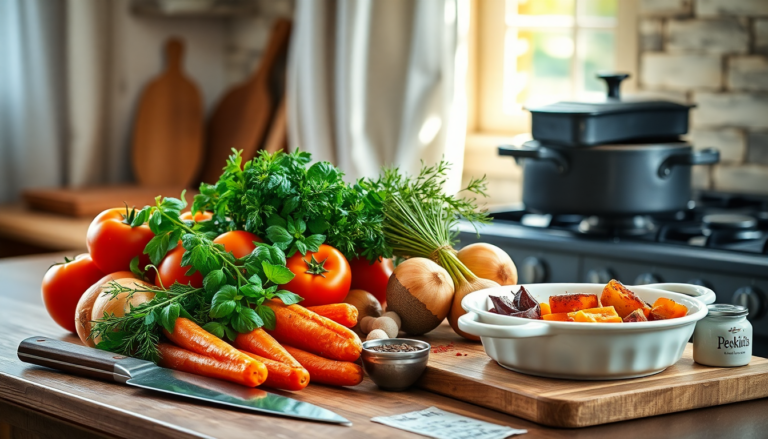Argomenti trattati
Imagine the aroma of fresh herbs mingling with the warmth of roasted vegetables, each bite evoking a memory, a moment in time, or a place you hold dear. Cooking is about so much more than just nourishment; it’s an art form that tells stories through flavor. As we dive into the world of culinary storytelling, let’s explore how every ingredient carries its own tale and how these narratives shape our dining experiences.
Unearthing the Story Behind the Ingredients
Every dish we create is like a canvas, and each ingredient is a brushstroke, contributing to the masterpiece that unfolds on our plates. Consider the humble tomato, for instance. Behind its vibrant red exterior lies a rich history filled with culture and tradition. This fruit, which originated in the Americas, made its way across the ocean to become a staple of Mediterranean cuisine. It symbolizes a beautiful fusion of worlds, bringing together flavors that are both familiar and exotic. Isn’t it fascinating how something so simple can have such a complex backstory?
As a chef, I’ve learned that understanding the origins of our ingredients is crucial. The concept of terroir—the unique characteristics imparted by the environment where a crop is grown—plays a significant role in this narrative. When we cook with local produce, we’re not just supporting sustainable practices; we’re enhancing the authenticity of our dishes. This connection to the land enriches our culinary creations, allowing us to honor the traditions that have come before us. Wouldn’t you agree that food tastes better when you know the story behind it?
The Accessible Art of Cooking Techniques
Cooking often gets a reputation for being a complex science reserved for the elite. But here’s the good news: every technique can be demystified and made accessible to all. Take fermentation, for example—a method as ancient as time itself. This process transforms simple ingredients into extraordinary flavors. By allowing natural bacteria to work their magic, we create depth and umami that elevate our dishes to new heights.
Behind every culinary technique lies a practical application that home cooks can easily embrace. Think about sautéing, a method that swiftly cooks food in a small amount of fat, locking in flavors and nutrients. It’s not just a cooking method; it’s about the transformation that takes place in that pan. As I often say, “The palate never lies.” The taste achieved through such techniques is a testament to the skill and care poured into the cooking process. How satisfying is it to know that you can create restaurant-quality flavors in your own kitchen?
Connecting with Tradition and the Land
Our culinary heritage is a treasure trove of stories waiting to be uncovered. Each dish we prepare links us to our ancestors, their struggles, and their celebrations. Through these recipes, we honor tradition and keep these stories alive. Take the classic risotto, for example—it embodies the heart of Italian cuisine. Its creamy texture and rich flavors reflect the labor and love poured into its creation, often enjoyed among family and friends during gatherings. Doesn’t that make you want to whip up a pot of risotto yourself?
Moreover, as we embrace the philosophy of short supply chains, we deepen our connection with local farmers and artisans. By sourcing ingredients from nearby, we not only reduce our carbon footprint but also celebrate the unique flavors of our region. This practice supports sustainable agriculture and strengthens the bond between our plates and the earth. Isn’t it wonderful to think that each bite can make a difference?
So, I invite you on this culinary journey—not just to taste food, but to connect with the stories woven into every dish. The next time you sit down for a meal, take a moment to reflect on its origins, the techniques used in its preparation, and the traditions it represents. Let your palate guide you through this rich tapestry of flavors, histories, and cultures, reminding us that behind every dish, there’s a story just waiting to be savored. What story will your next meal tell?

